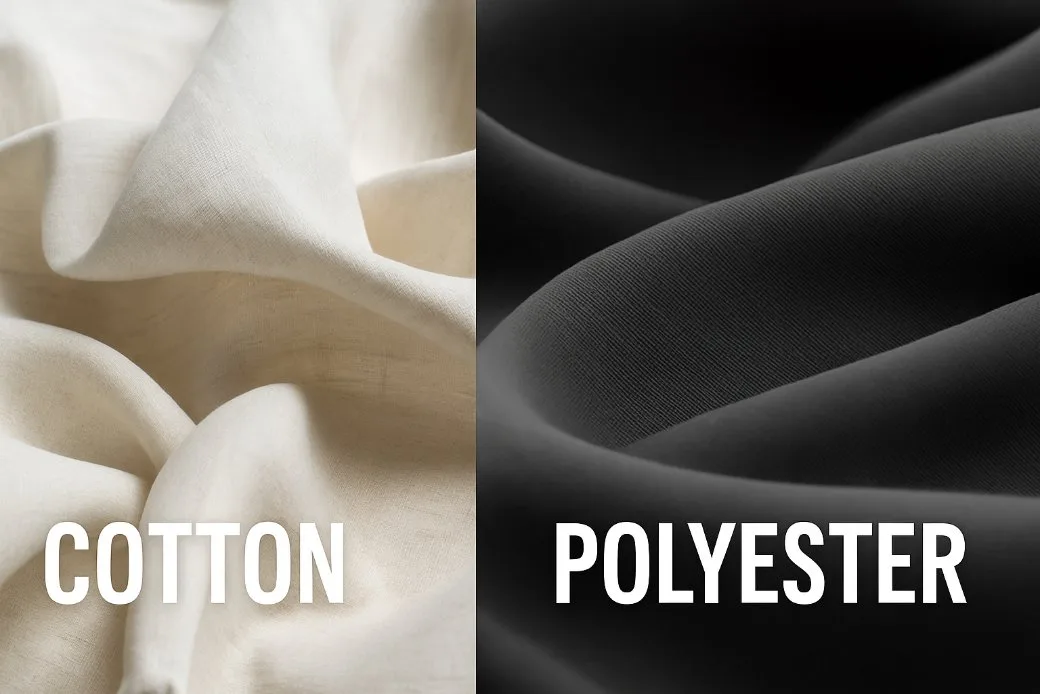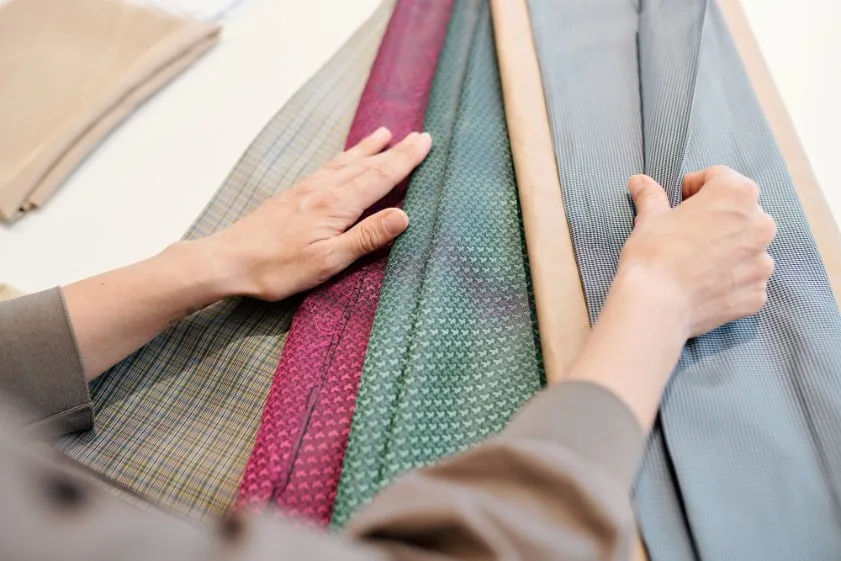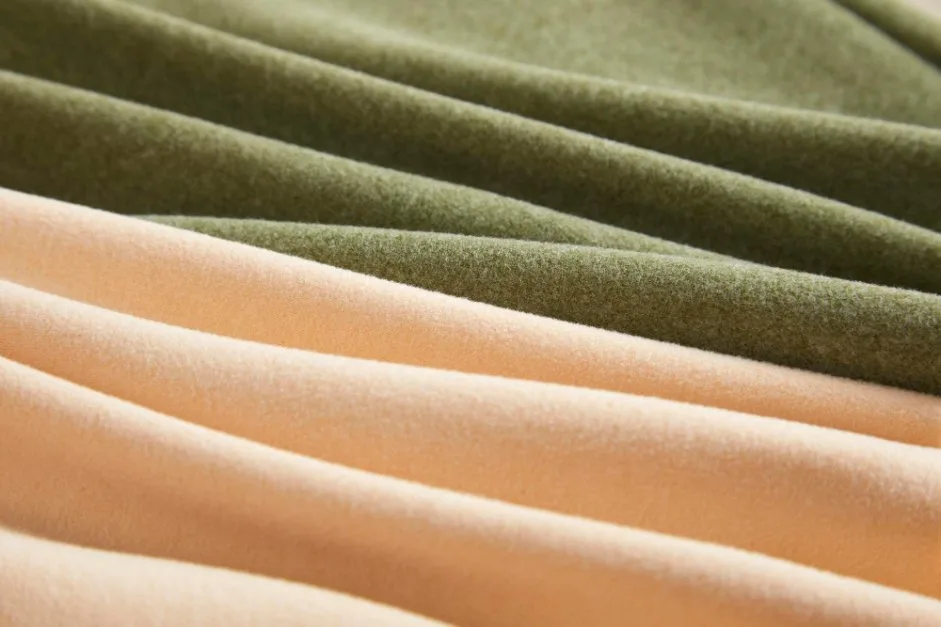Cotton vs Polyester: Complete Fabric Guide for Smart Shoppers (2025)
Cotton and polyester are two of the most common fabrics found in clothes, bedding, and many other products. They both have unique features, so choosing between them can be confusing. Cotton is a natural fiber that feels soft and breathes well, while polyester is a strong, man-made material that is easy to care for and dries quickly.
Each fabric comes with its own strengths and weaknesses. Some people prefer cotton for its comfort and coolness, while others like polyester for its durability and how it keeps its shape. Knowing how these fabrics perform can help people pick what best fits their needs.
Table of Contents
Key Takeaways
- Cotton and polyester have different origins and uses
- Each fabric offers unique benefits in comfort, durability, and care
- Understanding the differences makes it easier to choose the right one
- Blends combine the best properties of both materials
- The right choice depends on your specific needs and preferences
What Are Cotton and Polyester?
Cotton and polyester are two of the most widely used materials in the textile world. Each has unique features, origins, and uses that affect how fabrics feel, perform, and are made.
Overview of Cotton
Cotton is a natural fiber that comes from the seed pods of the cotton plant. The fibers are collected, cleaned, and spun into yarn to create different cotton fabrics. There are several types, including regular and organic cotton. Organic cotton is grown without synthetic pesticides or fertilizers.
What does cotton feel like? Cotton fabric is known for being soft, breathable, and absorbent. It has a natural, comfortable texture that feels gentle against the skin. The feel can vary depending on the weave and quality. High-quality cotton feels smooth and crisp, while lower grades might feel slightly rougher.
Cotton is also hypoallergenic, which means it is less likely to cause skin irritation. This makes it perfect for people with sensitive skin or those who are prone to allergies.
The main benefits of cotton are its comfort and ability to wick away moisture. However, it wrinkles easily and can shrink in the wash. Cotton is also less durable than some synthetic fibers if it is not cared for properly.
Are jeans made of cotton? Yes, traditional jeans are primarily made from cotton denim, though modern versions often include small amounts of elastane or polyester for stretch and durability.
Are towels cotton? Most quality towels are made from 100% cotton because of its excellent absorbency. Terry cloth, a cotton fabric with loops, is especially popular for towels.
What is Mercerized Cotton?
Mercerized cotton is regular cotton that has been treated with a special chemical process using sodium hydroxide. This treatment makes the cotton fibers stronger, more lustrous, and better at absorbing dyes. The result is cotton that looks shinier, feels smoother, and holds colors better than untreated cotton.
Overview of Polyester
Polyester is a synthetic fiber made from petroleum-based chemicals through a chemical process. The production of polyester fabric involves melting and extruding the raw material to form thin, strong fibers. It became popular in the textile industry during the 20th century as a more affordable option.
What does polyester look like? Polyester fibers appear smooth and uniform under magnification, with a consistent diameter throughout their length. The fabric has a slight sheen and can range from matte to shiny depending on how it’s processed.
How does polyester feel? Modern polyester feels smooth and lightweight. While early polyester felt plastic-like and uncomfortable, today’s versions are much softer. However, it still doesn’t match the natural softness of cotton. Polyester has a slightly slippery feel and can sometimes feel clingy against the skin.
Is polyester plastic? Yes, polyester is essentially a form of plastic. It’s made from the same base materials used to make plastic bottles (PET – polyethylene terephthalate).
Polyester fabric is durable, wrinkle-resistant, and quick-drying. It is less breathable than cotton, which makes it less suitable for hot weather or sensitive skin. However, its strength and resistance to shrinking and stretching make it a top choice for sportswear, uniforms, and outdoor gear.
There are also options like recycled polyester, which is made from used plastic bottles or other recycled materials. This helps reduce waste but still shares many of the same properties as regular polyester.
What is polyester used for? Polyester is used in clothing (especially activewear), bedding, curtains, upholstery, carpets, and industrial applications. It’s particularly popular for items that need to be durable and easy to care for.
Blends and Alternatives
Blending cotton and polyester combines the strengths of both fibers. A cotton-polyester blend can be softer and cooler than pure polyester but more durable and easier to care for than pure cotton. These blends are common in t-shirts, bedding, and workwear.
Some fabrics use a higher ratio of one fiber over the other to achieve specific features. For example, more polyester adds strength and moisture resistance, while more cotton increases softness and breathability.
Plant-based polyester and other alternative fibers are being developed as sustainable options. Recycled polyester is an example of how innovation in the textile industry is working to reduce environmental impact while still providing useful properties for fabrics and textiles.

How to Identify Cotton vs Polyester: The Ultimate Testing Guide
Knowing how to tell these fabrics apart is useful when shopping or caring for your clothes. Here are three reliable methods:
The Burn Test
Warning: Only adults should perform this test in a safe, controlled environment.
- Cotton: Burns quickly with a bright flame, smells like burning paper, and leaves soft gray ash
- Polyester: Melts and forms black beads, smells acrid or chemical-like, and creates hard residue
The Feel Test
- Cotton: Feels soft, natural, and slightly textured. It has a matte appearance
- Polyester: Feels smooth, slippery, and often has a slight sheen. May feel more artificial
The Water Test
- Cotton: Absorbs water quickly when you place a drop on it
- Polyester: Water beads up and rolls off the surface due to its hydrophobic nature

Key Properties and Performance
Cotton and polyester each have unique qualities that affect how they feel, perform, and last. Their differences impact daily wear, care routines, and which fabric is better for different situations.
Breathability and Comfort
Does polyester breathe? Polyester is less breathable than cotton because its synthetic fibers don’t allow air to flow through as easily. The tight weave and non-porous nature of polyester fibers can trap heat and moisture.
Is polyester a breathable fabric? While not as breathable as cotton, modern polyester fabrics can be engineered to be more breathable through special weaves and moisture-wicking treatments.
Cotton is well-known for its breathability and soft feel. Its natural fibers allow air to move easily, making cotton comfortable and cool, especially in hot weather. This makes cotton a good choice for people with sensitive skin or allergies, as it rarely causes irritation.
Why does polyester make me itch? Polyester can cause itching because its synthetic fibers don’t breathe well and can trap moisture against the skin. Some people are also sensitive to the chemicals used in polyester production.
Can you be allergic to polyester? While true allergies to polyester are rare, many people experience contact dermatitis or skin irritation from wearing polyester, especially if they have sensitive skin.
Temperature Regulation
Is polyester good for summer? Generally, no. Polyester traps heat and doesn’t allow your skin to breathe, making it uncomfortable in hot weather. However, moisture-wicking polyester athletic wear can be suitable for summer exercise.
Is polyester good for winter? Yes, polyester can be good for winter because it retains heat well and dries quickly. Many winter coats and thermal underwear use polyester for warmth.
Is polyester warm? Polyester is warmer than cotton because it traps your body heat and doesn’t allow cold air to penetrate. This makes it excellent for cold weather but uncomfortable in heat.
Which is better for summer, cotton or polyester? Cotton is generally better for summer because it’s more breathable and helps keep you cool. Cotton allows air to flow through the fabric and absorbs moisture from your skin.
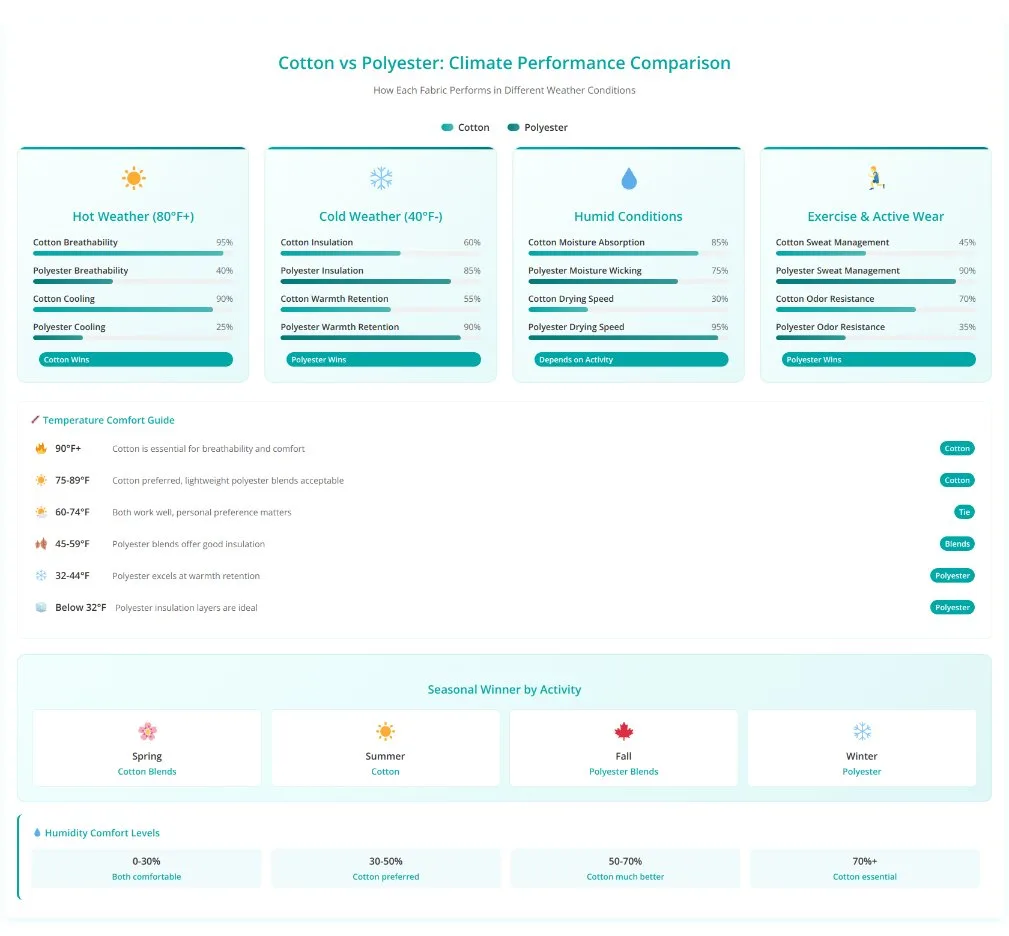
Moisture and Sweat Management
Does polyester absorb sweat? No, polyester doesn’t absorb sweat like cotton does. Instead, it repels moisture and moves it to the fabric’s surface where it can evaporate.
Why does polyester make me sweat? Polyester can make you feel sweaty because it doesn’t breathe well and traps heat against your skin. The moisture has nowhere to go, creating a clammy feeling.
Do you sweat more in cotton or polyester? You might sweat more in polyester because it doesn’t breathe as well as cotton. However, polyester athletic wear is designed to wick sweat away from your skin, which can actually help keep you drier during exercise.
Does polyester absorb water? No, polyester is hydrophobic, meaning it repels water. This is why it dries so quickly but also why it doesn’t absorb sweat like cotton.
Is polyester waterproof? While polyester resists water, it’s not completely waterproof unless specially treated. The tight weave makes it naturally water-resistant.
Cotton is excellent at absorbing moisture. It can soak up a lot of sweat, which helps keep skin dry for a while but may leave clothes feeling damp and heavy. Cotton is not a quick-drying fabric and will stay wet longer than polyester.
Polyester is hydrophobic, meaning it repels water. It does not absorb sweat but instead moves moisture away from the skin. This moisture-wicking ability makes polyester a top choice for workout clothes and sportswear.
| Property | Cotton | Polyester |
|---|---|---|
| Absorbency | High | Low |
| Quick-drying | No | Yes |
| Moisture-wicking | No | Yes |
| Breathability | High | Low to Medium |
Odor and Smell Issues
Why does polyester smell bad? Polyester can develop odors because it traps bacteria and doesn’t allow proper air circulation. The synthetic fibers hold onto oils and sweat more than natural fibers.
Why does polyester make me smell? Polyester doesn’t absorb moisture well, so sweat sits on the surface where bacteria can grow and create odors. The fabric also doesn’t breathe, trapping these smells.
Why does polyester smell after washing? Sometimes polyester retains odors even after washing because the synthetic fibers can hold onto bacteria and oils. Using hot water and enzyme detergents can help remove these smells.
Durability and Longevity
Polyester is highly durable. Its synthetic fibers resist stretching, shrinking, and general wear. Clothes made from polyester can last for many years, even with frequent washing and use.
Cotton is less durable than polyester. It can weaken with repeated wash cycles and is more likely to shrink or stretch out of shape. Cotton fibers may also fade after many washes, especially if washed in hot water or strong detergents.
Polyester holds dye very well, so colors stay bright longer. It also resists wrinkles and is less likely to tear, making it popular for uniforms and activewear. Cotton, while strong, is more prone to wrinkling and fading but can be long-lasting when properly cared for.
Care and Maintenance
Cotton needs more careful maintenance. It is prone to shrinking and wrinkling, especially when washed or dried at high temperatures. Cotton clothes often need ironing to look neat.
Polyester is much easier to care for. It resists wrinkles, shrinking, and stretching, so it keeps its shape after many washes. Polyester is usually safe for machine washing and drying and almost never needs ironing.
Both cotton and polyester are commonly used in everyday clothing, but polyester’s low-maintenance nature can save time and effort. Cotton may need more gentle handling and attention to last longer and look its best.
Popular Fabric Blends: Getting the Best of Both Worlds

50/50 Cotton-Polyester Blend
Is 50 polyester 50 cotton good? Yes, this is one of the most popular blends because it balances the softness of cotton with the durability of polyester. You get:
- Moderate softness and breathability from cotton
- Durability and wrinkle resistance from polyester
- Easier care than 100% cotton
- More affordable than pure cotton
- Less shrinkage than 100% cotton
This blend is perfect for everyday t-shirts, casual wear, and items that need to look good with minimal care.
65/35 Cotton-Polyester Blend
Is 65 polyester 35 cotton good? This polyester-heavy blend offers:
- Excellent durability and wrinkle resistance
- Quick-drying properties
- Color retention
- Lower cost
- Good for uniforms and workwear
However, it’s less breathable and softer than cotton-heavy blends.
60/40 Cotton-Polyester Blend
Is 60 cotton 40 polyester better than 100 cotton? This cotton-heavy blend can be better than 100% cotton for many uses because it:
- Maintains most of cotton’s softness and breathability
- Adds durability and wrinkle resistance
- Reduces shrinkage
- Requires less ironing
- Offers better value for money
Other Popular Blends
80% Cotton, 20% Polyester: Offers a more natural feel while retaining some of polyester’s benefits. Popular for premium t-shirts and casual wear.
Tri-blends (Cotton/Polyester/Rayon): Combines the softness of cotton, durability of polyester, and drape of rayon for an ultra-soft, comfortable feel.
Suitability for Different Uses
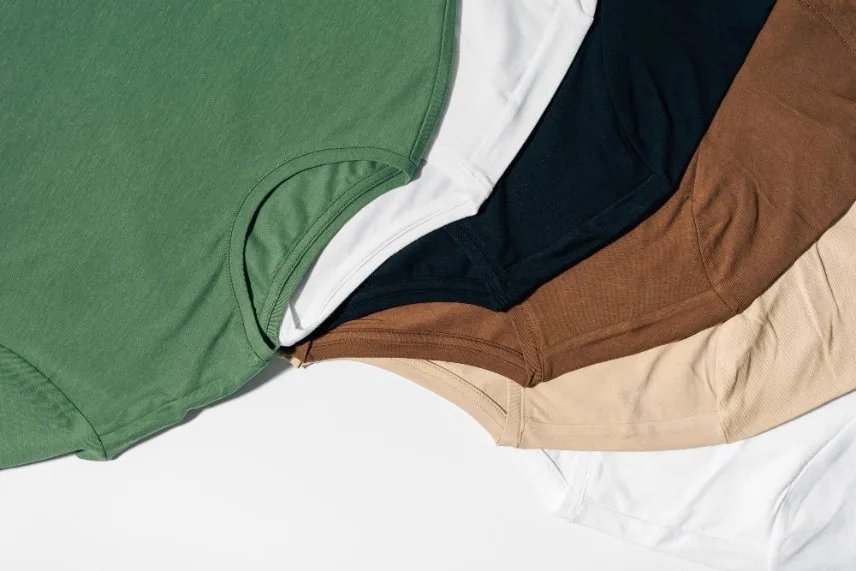
Cotton and polyester are used for many types of clothing and textiles. Each fabric has strengths that make it a better choice for certain uses, depending on comfort, function, and durability.
Everyday Wear and Fashion
Cotton is popular for everyday wear like t-shirts, shirts, and casual pants because it is soft and breathable. Its comfort makes it a favorite for clothing worn close to the skin. Cotton also absorbs moisture well, keeping people feeling dry in mild conditions.
Polyester is used in many modern fashion fabrics. It does not wrinkle easily and holds color after many washes. Polyester is also lightweight, which can be a benefit for certain styles. It is often blended with cotton to offer both softness and improved strength.
For professional attire, cotton is often chosen for blouses, dress shirts, and smart-casual garments. Polyester blends are common in suits and uniforms because of their durability and resistance to shrinking or creasing.
Activewear and Sportswear
Is polyester a good fabric? For athletic wear, yes. Polyester is the leading fabric in activewear, sportswear, and outdoor clothing. Its key feature is moisture-wicking, which pulls sweat away from the skin and helps it dry quickly. This keeps athletes and active people more comfortable during intense exercise.
Polyester fleece and technical fabrics provide insulation for outdoor wear. They are durable even after regular washing and outdoor use. Many brands use polyester for items like gym shorts, team jerseys, and running jackets because it resists stretching and losing shape.
Cotton is less common in performance clothing because it absorbs sweat and dries slowly. However, cotton is still found in some light sports tops for low-impact activities.
Bedding and Sleep Comfort
Is cotton or polyester better for hot sleepers? Cotton is generally better for hot sleepers because it’s more breathable and doesn’t trap heat like polyester does.
Which is better, cotton or polyester bed sheets? Cotton sheets are usually preferred because they:
- Feel softer and more natural
- Breathe better for temperature regulation
- Improve with washing (getting softer over time)
- Don’t create static electricity
However, polyester sheets offer:
- Lower cost
- Easy care (wrinkle-resistant)
- Durability
- Color retention
Special and Industrial Applications
Polyester is widely used in industrial applications due to its strength, resistance to chemicals, and ability to hold its shape. It is found in uniforms, workwear, and high-durability textiles. Polyester is chosen for items where long-term wear and frequent washing are required, such as hospital scrubs or cleaning cloths.
Cotton is used in some special applications where breathability or natural properties are valued, like some medical dressings or crafts. However, for most industrial settings, polyester’s properties make it more suitable.
| Application | Cotton | Polyester |
|---|---|---|
| T-shirts/casual wear | Very common | Common, often blended |
| Activewear | Limited | Very common |
| Industrial Uniforms | Sometimes | Very common |
| Professional Attire | Common | Common in blends |
| Bedding | Preferred | Budget option |
Health and Skin Considerations

Skin Sensitivity and Allergies
Is polyester or cotton better for your skin? Cotton is generally better for your skin, especially if you have sensitive skin or allergies. Here’s why:
Cotton benefits for skin:
- Hypoallergenic and gentle
- Allows skin to breathe
- Absorbs moisture naturally
- Less likely to cause irritation
- Chemical-free (especially organic cotton)
Why is polyester bad for your skin? Polyester can be problematic for skin because:
- It doesn’t breathe well, leading to trapped moisture
- Can cause heat rash or skin irritation
- Some people are sensitive to the chemicals used in production
- Creates static electricity that can be uncomfortable
- Traps bacteria and odors against the skin
Health Considerations
Is cotton or polyester better for health? Cotton is generally considered healthier because:
- It’s a natural, non-toxic material
- Allows better air circulation
- Doesn’t off-gas chemicals
- Reduces risk of skin problems
- Thermoregulates better, preventing overheating
However, polyester isn’t necessarily “unhealthy” for most people. The choice often comes down to personal comfort and any specific sensitivities you may have.
Environmental Impact and Sustainability
Cotton and polyester have different effects on the environment. Their impact depends on factors like how they break down, use resources, and the way they are produced.
Biodegradability and Eco-Friendliness
Cotton is a natural fiber made from plants and is biodegradable. When disposed of, cotton breaks down naturally in the environment and does not leave lasting waste. This makes cotton a more eco-friendly choice when compared to regular polyester.
Polyester is a synthetic fiber made from non-renewable resources like petroleum. It is not biodegradable and can take hundreds of years to decompose. If polyester fabrics end up in landfills, they often persist as waste and can shed microplastics.
Organic cotton goes a step further by avoiding harmful chemicals, making it safer for the soil and water. Recycled polyester reuses plastic waste, helping to reduce landfill impact, but it still does not break down naturally like cotton fibers.
Resource Usage and Production Methods
Conventional cotton needs large amounts of water, land, and often relies on pesticides and fertilizers. This leads to a significant environmental footprint. For example, the water used to grow cotton crops can strain local supplies, especially in dry areas.
Polyester production relies on fossil fuels, which are non-renewable. The process emits more greenhouse gases per kilogram than cotton processing. Polyester does not require agricultural land or water for growth but has a higher carbon footprint.
Options like organic cotton reduce chemical use and support more sustainable agriculture. Recycled polyester helps cut down new plastic production and makes use of existing waste, but it still involves energy-intensive manufacturing.
| Material | Biodegradable | Main Resource | Carbon Footprint | Water Usage |
|---|---|---|---|---|
| Cotton | Yes | Renewable (plants) | Lower than polyester | High |
| Polyester | No | Non-renewable (oil) | Higher than cotton | Low |
| Organic Cotton | Yes | Renewable (plants) | Lower with methods | Lower than regular |
| Recycled Polyester | No | Recycled plastics | Medium | Low |
Comprehensive Comparison Guide
Comfort and Feel Comparison
What feels better cotton or polyester? This depends on personal preference and the specific use:
Cotton feels better for:
- Everyday comfort
- Sleeping
- Hot weather
- People with sensitive skin
- Natural, soft texture preferences
Polyester feels better for:
- Athletic activities
- Quick-drying needs
- Easy-care situations
- Durability requirements
Does 100% polyester feel like cotton? Modern polyester can feel similar to cotton, but it’s typically smoother and less textured. High-quality polyester blends can closely mimic cotton’s feel while adding performance benefits.
Temperature Performance
Which is better cotton or polyester? The answer depends on the temperature:
For Hot Weather:
- Cotton wins for breathability and cooling
- Polyester athletic wear can work for exercise but may feel hot otherwise
For Cold Weather:
- Polyester wins for insulation and warmth retention
- Cotton can work but may not keep you as warm when wet
What keeps you warmer, polyester or cotton? Polyester keeps you warmer because it retains body heat better and doesn’t lose insulation when damp.
Performance Comparison
Is 100% polyester cooler than cotton? No, 100% polyester is typically warmer than cotton because it doesn’t breathe as well and traps heat.
Is polyester hot to wear? Yes, polyester can feel hot to wear in warm weather because it doesn’t allow your skin to breathe properly.
Is 100% polyester sweaty? Polyester can feel sweaty because it doesn’t absorb moisture from your skin and doesn’t allow proper air circulation.
To help you weigh the advantages and disadvantages of each fabric, we’ve created an interactive fabric comparison tool. You can filter by specific categories that matter most to you, whether that’s comfort, performance, care requirements, or environmental impact.
Our cotton vs polyester comparison chart provides numerical scores and detailed breakdowns to help you make an objective decision based on what matters most to you.
Choosing the Right Fabric: Decision Guide
When deciding between cotton and polyester, consider these factors:
Use-Based Recommendations
For Everyday Clothing:
- Choose cotton for comfort and breathability
- Choose cotton-polyester blends for durability with comfort
For Athletic Wear:
- Choose polyester or polyester blends for moisture-wicking
- Avoid 100% cotton for intense exercise
For Work Uniforms:
- Choose polyester blends for easy care and durability
- Consider stain resistance and wrinkle resistance needs
For Bedding:
- Choose cotton for breathability and comfort
- Consider cotton blends for easy care
For Children’s Clothing:
- Choose cotton for sensitive skin
- Consider cotton blends for active kids who need durability
Climate Considerations
Hot, Humid Climates:
- Cotton is usually the better choice
- Lightweight cotton works best
- Avoid heavy polyester
Cold Climates:
- Polyester can be good for outer layers
- Cotton works well for base layers
- Blends offer versatility
Variable Climates:
- Cotton-polyester blends offer the most versatility
- Layer different fabrics for adaptability
Fabric Decision Flowchart
Start: What's your main priority?
Comfort & Breathability → Cotton (especially for hot weather)
Durability & Easy Care → Polyester or Polyester Blend
Athletic Performance → Polyester
Cost-Effective → Polyester or 50/50 Blend
Skin Sensitivity → 100% Cotton (preferably organic)
Versatility → Cotton-Polyester Blend
Environmental Impact → Organic Cotton or Recycled Polyester
Not sure which fabric is right for you? Try our interactive fabric decision tool that takes the guesswork out of choosing between cotton and polyester. Simply answer a few quick questions about your needs, and get a personalized recommendation based on your specific situation.
This fabric recommendation quiz considers your intended use, climate, priorities, and skin sensitivity to recommend the perfect fabric match for your lifestyle.
Frequently Asked Questions
General Questions
Which is better cotton or polyester?
Neither is universally better. Cotton excels in comfort and breathability, while polyester wins in durability and easy care. The best choice depends on your specific needs, climate, and personal preferences.
Can you mix cotton and polyester in the same wash load?
Yes, you can wash cotton and polyester together. Use cool to warm water and avoid high heat in the dryer to protect the cotton from shrinking.
How long does each fabric last?
Polyester typically lasts longer than cotton due to its synthetic strength. Well-cared-for polyester can last many years, while cotton may show wear sooner but can still last long with proper care.
Cotton-Specific Questions
Does cotton shrink every time you wash it?
No, cotton mainly shrinks during the first few washes. Pre-shrunk cotton and proper washing techniques can minimize shrinkage.
What’s the difference between regular and organic cotton?
Organic cotton is grown without synthetic pesticides, fertilizers, or GMO seeds. It’s better for the environment and may be gentler on sensitive skin.
Polyester-Specific Questions
Is polyester safe to wear?
Yes, polyester is generally safe to wear. However, some people with sensitive skin may experience irritation or discomfort.
Can polyester cause skin problems?
Polyester can cause skin irritation in some people, especially those with sensitive skin or eczema. It may also trap moisture and bacteria, potentially leading to skin issues.
How can I make polyester more comfortable?
Choose polyester blends with natural fibers, look for moisture-wicking treatments, or layer polyester with cotton undergarments.
Blend Questions
What’s the most popular cotton-polyester blend?
The 50/50 cotton-polyester blend is most popular for everyday wear, while 65/35 (cotton/polyester) is common for premium comfort.
Do blends shrink?
Blends typically shrink less than 100% cotton. The more polyester in the blend, the less it will shrink.
Care Questions
Can I iron polyester?
Yes, but use low heat. Polyester can melt at high temperatures, so always check the care label.
Why do my polyester clothes still smell after washing?
Polyester can trap odors in its fibers. Try washing with hot water, enzyme detergent, or adding white vinegar to help remove persistent odors.
Shopping Questions
How can I tell if fabric is cotton or polyester when shopping?
Check the care label for fiber content. Cotton feels softer and more natural, while polyester feels smoother and may have a slight sheen.
Is more expensive cotton worth it?
Higher-quality cotton (like Egyptian or Pima cotton) often feels softer, lasts longer, and performs better, making it worth the investment for items you’ll use frequently.
Which fabric should I choose for my specific needs?
The best choice depends on your priorities, climate, and intended use. Our fabric decision tool can provide personalized recommendations based on your specific situation
Advanced Technical Properties
Thread Count and Quality Indicators
Cotton Quality Factors:
- Higher thread count often means softer, more durable fabric
- Longer staple fibers (like Pima cotton) create smoother, stronger fabric
- Ring-spun cotton feels softer than open-end cotton
Polyester Quality Factors:
- Denier (fiber thickness) affects feel and durability
- Microfiber polyester feels softer and more cotton-like
- Special treatments can improve breathability and moisture-wicking
Performance Under Different Conditions
UV Protection:
- Cotton provides moderate UV protection
- Polyester can be treated for enhanced UV protection
- Darker colors in both fabrics offer better protection
Chemical Resistance:
- Polyester resists most chemicals and stains
- Cotton can be damaged by bleach and acidic substances
- Polyester is preferred for industrial applications
Flame Resistance:
- Cotton burns easily but can be treated for flame resistance
- Polyester melts rather than burns, which can be dangerous
- Special flame-retardant versions are available for both
Cost-Benefit Analysis

Initial Costs
Cotton Pricing:
- Regular cotton: Budget-friendly
- Organic cotton: 20-40% more expensive
- Premium cotton (Pima, Egyptian): 50-100% more expensive
Polyester Pricing:
- Virgin polyester: Very affordable
- Recycled polyester: Slightly more expensive than virgin
- Performance polyester: Moderate to high cost
Long-Term Value
Cost Per Wear Analysis:
- Polyester’s durability often makes it more economical over time
- Quality cotton can last many years with proper care
- Blends often offer the best value proposition
Care Costs:
- Polyester saves money on dry cleaning and ironing
- Cotton may require more careful (and costly) care
- Energy costs for drying are lower with polyester
Replacement Frequency
Cotton: May need replacement every 2-5 years depending on quality and care Polyester: Can last 5-10 years or more with proper care Blends: Typically last 3-7 years, balancing durability and comfort
The true cost of fabric goes beyond the initial purchase price. Our fabric cost calculator helps you understand the total cost of ownership over time, including care expenses and replacement needs.
Use our cotton vs polyester cost comparison tool to factor in washing frequency, durability differences, and care requirements to see which fabric offers better long-term value for your specific situation.
Seasonal Wardrobe Planning

Summer Wardrobe
Best Choices:
- Lightweight cotton for maximum breathability
- Cotton-linen blends for hot, humid weather
- Performance polyester only for athletic activities
Avoid:
- Heavy polyester blends
- Dark polyester colors (absorb heat)
- Tight-fitting polyester garments
Winter Wardrobe
Best Choices:
- Polyester for outer layers and insulation
- Cotton for base layers against skin
- Merino wool-polyester blends for warmth with comfort
Layering Strategy:
- Cotton base layer for comfort
- Insulating polyester middle layer
- Weather-resistant polyester outer layer
Transitional Seasons
Spring/Fall Recommendations:
- Cotton-polyester blends for versatility
- Lightweight cotton for mild days
- Polyester layers for unpredictable weather
Your local climate plays a huge role in determining which fabric will keep you most comfortable throughout the year. Our climate-based fabric recommendation tool provides personalized fabric suggestions based on your location’s weather patterns.
Try our fabric climate guide to get specific recommendations for each season, along with activity-based suggestions and comfort performance data for your area.
Industry Applications and Innovations

Medical and Healthcare
Cotton Applications:
- Surgical gauze and medical dressings
- Hospital gowns and patient clothing
- Hypoallergenic baby products
Polyester Applications:
- Scrubs and uniforms (easy care, durability)
- Medical implants (biocompatible polyester)
- Disposable medical products
Sports and Athletic Industry
Performance Innovations:
- Moisture-wicking polyester technology
- Antimicrobial treatments for odor control
- Compression fabrics for muscle support
- Temperature-regulating fabric treatments
Fashion and Luxury Markets
Sustainable Innovations:
- Recycled polyester from ocean plastic
- Organic cotton farming improvements
- Bio-based polyester alternatives
- Circular fashion initiatives
Future Trends and Innovations
Emerging Technologies
Smart Fabrics:
- Temperature-regulating fibers
- Moisture-sensing textiles
- Antimicrobial fabric treatments
- Odor-eliminating technologies
Sustainable Developments:
- Plant-based polyester alternatives
- Closed-loop recycling systems
- Biodegradable synthetic fibers
- Reduced-water cotton farming
Market Predictions
Next 5 Years:
- Increased demand for sustainable options
- Growth in performance fabric blends
- Improved recycling technologies
- Bio-based material development
Consumer Trends:
- Greater awareness of environmental impact
- Preference for versatile, multi-use fabrics
- Demand for transparency in manufacturing
- Interest in locally-sourced materials
Conclusion
The choice between cotton and polyester ultimately comes down to understanding your specific needs and priorities. Both fabrics have carved out important roles in our wardrobes and daily lives, each offering distinct advantages that make them valuable in different situations.
Cotton remains the champion for comfort and natural feel. Its breathability, softness, and hypoallergenic properties make it ideal for everyday wear, sleepwear, and situations where skin comfort is paramount. Cotton’s biodegradable nature also appeals to environmentally conscious consumers. However, it requires more careful maintenance and can lack the durability needed for high-wear situations.
Polyester excels in performance and practicality. Its durability, wrinkle resistance, and moisture-wicking properties make it indispensable for athletic wear, work uniforms, and situations where easy care is important. The fabric’s quick-drying nature and color retention provide excellent value for busy lifestyles. Yet its synthetic nature can feel less comfortable against the skin and raises environmental concerns.
Fabric blends offer the most practical solution for many people. A 50/50 cotton-polyester blend combines cotton’s comfort with polyester’s durability, while 60/40 cotton-heavy blends maintain more natural feel with added performance benefits. These blends represent smart compromises that work well for everyday clothing, bedding, and versatile wardrobe pieces.
Key Recommendations
Choose 100% Cotton When:
- You have sensitive skin or allergies
- Comfort and breathability are top priorities
- You’re buying sleepwear or underwear
- Environmental impact is a major concern
- You live in a hot, humid climate
- You prefer natural, soft textures
Choose 100% Polyester When:
- Durability and longevity are essential
- You need easy-care, wrinkle-free clothing
- Athletic performance is the priority
- Budget is a primary consideration
- You need quick-drying properties
- Color retention is important
Choose Cotton-Polyester Blends When:
- You want versatility for multiple uses
- Balance between comfort and durability is needed
- Easy care with natural feel is desired
- You’re shopping for everyday clothing
- Cost-effectiveness is important
- You need moderate performance features
Final Thoughts
The textile industry continues to evolve, with innovations making both cotton and polyester more sustainable and functional. Recycled polyester offers environmental benefits while maintaining performance, and organic cotton provides natural comfort with reduced environmental impact.
When building your wardrobe, consider having a mix of both fabrics and blends. Use 100% cotton for items where comfort is crucial, polyester or polyester blends for active wear and easy-care pieces, and cotton-polyester blends for versatile everyday items.
Remember that quality matters regardless of fabric choice. Well-made cotton will outlast cheap polyester, and high-quality polyester can feel nearly as comfortable as cotton. Read care labels, understand your fabric choices, and invest in pieces that match your lifestyle needs.
The cotton versus polyester debate doesn’t have a single winner because both fabrics serve different purposes. By understanding their unique properties and making informed choices based on your specific needs, you can build a wardrobe that’s both functional and comfortable, whether you’re reaching for the natural breathability of cotton or the practical performance of polyester.

